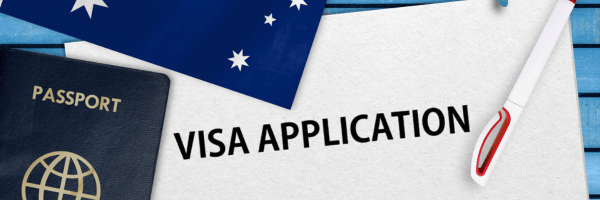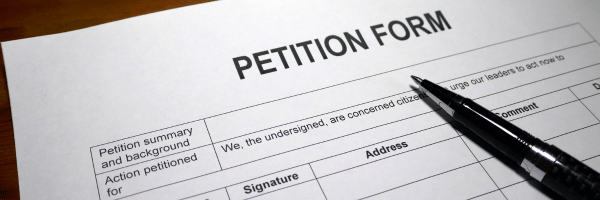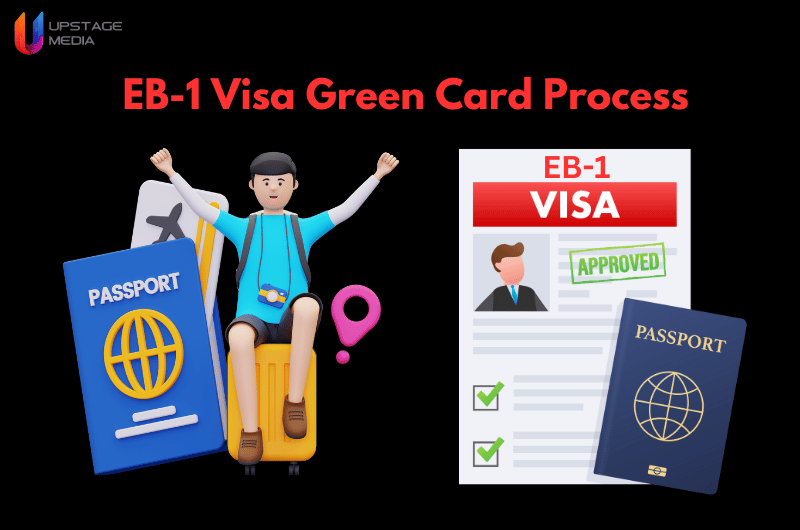Table of Contents
People with exceptional ability in their profession, great academics or researchers, plus international managers or executives are eligible for the EB1 visa green card process. This unique immigration route provides a shortened path to permanent status in the United States.
This step-by-step guide gives crucial information on navigating the EB-1 visa’s complex requirements as well as procedures, ensuring applicants have a thorough knowledge.
1. Understanding the EB-1 Visa Classification
- Extraordinary Ability: In order to qualify for this category, a person needs to demonstrate outstanding aptitude in whatever they choose sector, such as the arts, sciences, education, business, or athletics. The existence of ongoing national or international praise is important.
- Outstanding Professors or Researchers: This category is for academics who have achieved a great deal in their respective fields as well as a track record of excellence. A significant body of work, in-depth analysis, plus endorsement from peers are requirements for eligibility.
- Multinational Executives or Managers: High-level executives and managers working for multinational corporations are able to benefit from this category. It is critical to demonstrate management responsibilities as well as offer proof of a year’s worth of employment history within the company’s international network.
2. Assessing Your Eligibility for the EB-1 Visa
Before beginning the application process, it is critical to determine your eligibility for the EB1 Visa. You must exhibit exceptional talent in your specialty, exceptional professorial or research accomplishments, or international managerial experience to be considered.
Evidence of consistent national or international acclaim is needed for outstanding ability. Outstanding academics have to show their achievements in their fields, while managers from around the world should show their leadership positions in acceptable organizations.
Before moving forward with the application, it is essential that you carefully assess your qualifications and compile convincing evidence that you satisfy the particular requirements of your chosen EB-1 category.

3. Gathering and Organizing Your Supporting Documents
It takes careful planning to gather and arrange your supporting documentation for the EB1 Visa. It entails gathering proof of your eligibility claims, such as awards, publications, work records, and letters of recommendation.
If you want to make a strong case for the USCIS, proper organization is necessary. Make an in-depth list of every necessary document and make sure they are all genuine, up-to-date as well and labeled clearly. Organize them logically in order to ensure immigration officers can swiftly and properly evaluate your request. Your prospects of filing a successful EB-1 Visa petition can be improved by careful planning.
4. Completing Form I-140: Immigrant Petition
An essential stage in the application process for an EB-1 visa is filling out Form I-140, the Immigrant Petition for Alien Worker. Details about your education, work experience, and the particular EB-1 category you’re seeking are required on this form.
Completeness and submission accuracy are of the utmost importance because any mistakes could cause delays or rejections. Include all required supporting documentation as well as thorough, verified details. For a Form I-140 application to be accepted for an EB-1 Visa, accuracy and attention to detail are essential.
5. Filing Your EB-1 Visa Petition with USCIS
A crucial first step is submitting your EB1 Visa petition to US Citizenship and Immigration Services (USCIS). Form I-140 and all accompanying documentation should have been included in a full and well-organized application package. After paying the necessary costs, send your petition to the appropriate USCIS address.
Important criteria include accuracy, timeliness, as well as respect for USCIS regulations. After completing your application, check the status of it frequently online.
A strong argument is required for a successful outcome in the application for an EB-1 visa because USCIS will carefully analyze your documentation.

6. Premium Processing Option: Is it Right for You?
Premium Processing provides a 15-day response time from USCIS for certain immigration applications, including the EB-1 immigration. Consider this if you need to come up with a rapid decision. Consider your urgency in relation to the higher fee and the possibility of a faster answer.
Premium Processing could turn out to be the best alternative if speed is of crucial importance and the cost is appropriate. It is critical that you contrast the benefits against the costs so that you can make an informed decision depending on your unique circumstances.
7. Navigating the Visa Bulletin and Priority Dates
For EB-1 Visa applicants, understanding the Visa Bulletin and Priority Dates is critical. The Visa Bulletin indicates when visas for specific categories and countries become available, using Priority Dates as a guide. Monitor the Bulletin on a regular basis while comparing your Priority
Date to the current one to determine when you are able to continue with the EB1 Visa process, such as filing Form I-485 or attending an interview. It is of the utmost importance to be informed in order to plan a successful immigration.
8. Adjustment of Status vs. Consular Processing: Pros and Cons
Adjustment of Status
Pros:
- Individuals who are already in the United States on a non-immigrant visa are eligible.
- Can usually stay in the United States during the procedure.
- Processing periods are generally shorter as compared to consular processing.
- There is no requirement for overseas travel or visa interviews.
- Allows for the simultaneous filing of certain petitions (for example, work authorization).
Cons:
- Only individuals with particular visa classifications or immediate family links are eligible.
- It may be necessary to preserve legal status during the process.
- Long backlogs or visa bulletin delays are possible.
- Deportation procedures may follow a denial of adjustment of status.
- If the application is denied, there are few possibilities for appeal.
Consular Processing
Pros:
- Individuals living outside of the United States can access it.
- In general, family-sponsored visas are easier to obtain.
- It lays out a clear procedure for obtaining a visa.
- Consular personnel can help with the interview.
- There is no need to be concerned about retaining legal status in the United States.
Cons:
- International travel is required to attend visa interviews.
- Processing timeframes are longer owing to embassy/consulate appointments.
- Delays may occur as a result of security clearances or administrative processing.
- There is less leeway for concurrently filing work authorization and travel paperwork.
- Reapplication might be costly, as can travel expenditures.
9. Preparing and Submitting Form I-485: Application to Register Permanent Residence
Gather the relevant documents, including proof of eligibility, passport-style pictures, and the applicable fees, to create and submit Form I-485, Application to Register Permanent Residence or Adjust Status.
Fill out the form completely, double-checking for errors. Include any supporting documentation you have, such as medical exams or affidavits.
Send the application to the correct USCIS address, using the appropriate postage and delivery method. Keep a copy of your submission for your records while you await notification from USCIS of your biometrics appointment as well as interview.
Follow instructions carefully, because incomplete or incorrect information might result in delays or denial.

10. What to Expect During the EB-1 Visa Green Card Interview
Here are some points to be expected during an interview.
- Document Verification: Expect an in-depth verification of your documents, qualifications as well and achievements.
- In-Depth Questions: You will have to answer thoroughly regarding your job experience, qualifications, and future plans in the United States.
- Composure Is Key: You just need to stay composed, confident as well and honest throughout your interview session.
- Further Requests: You might be asked for an additional interview or requests for further information after the initial meeting.
